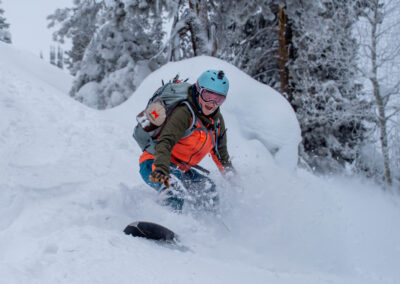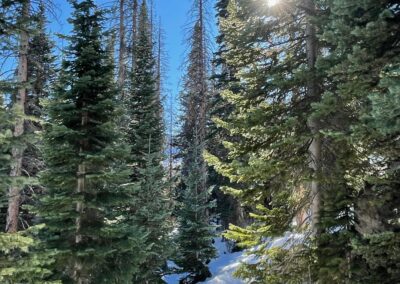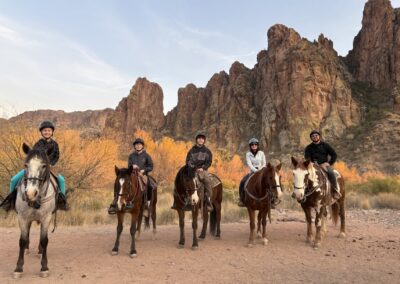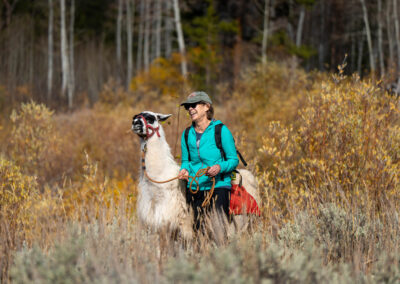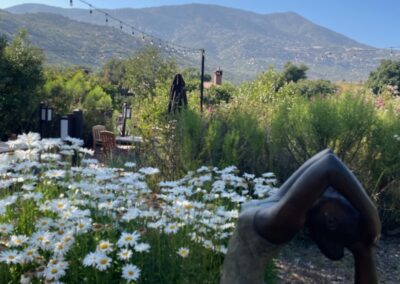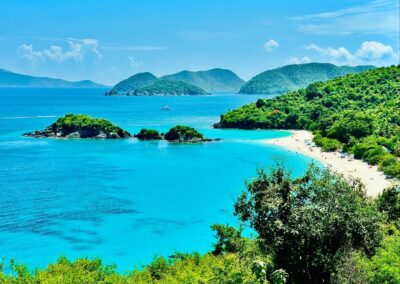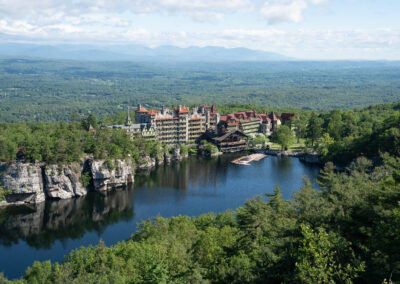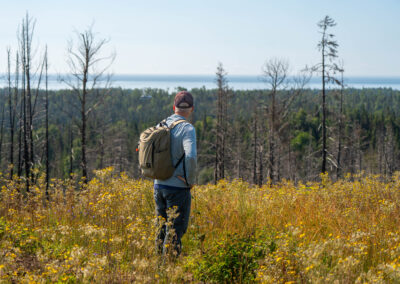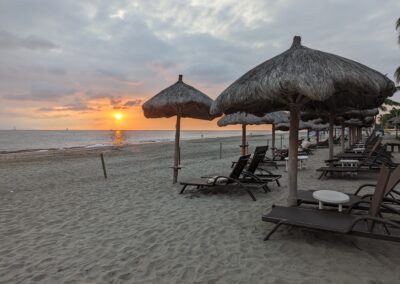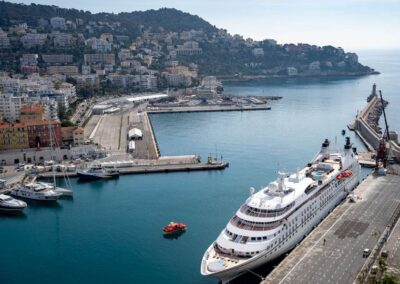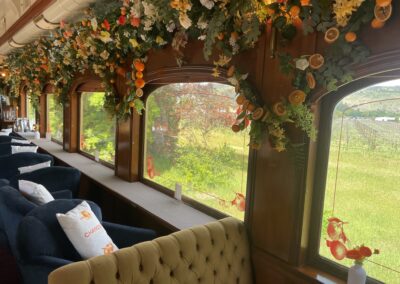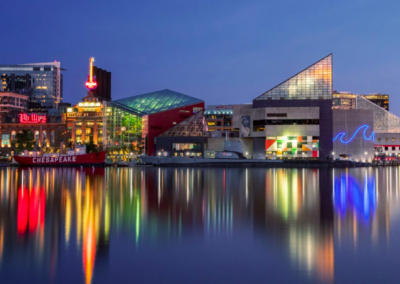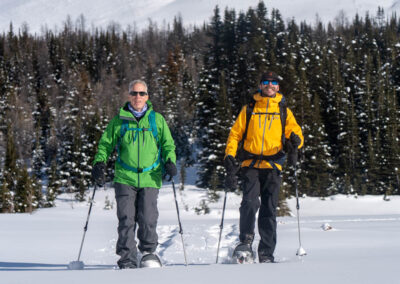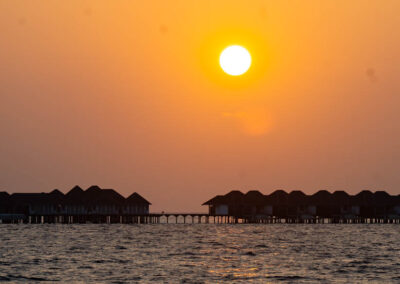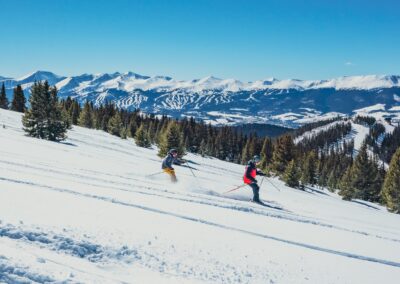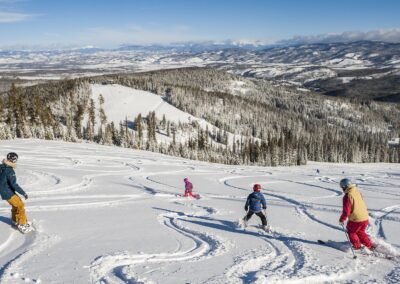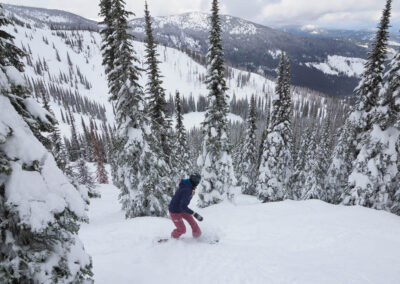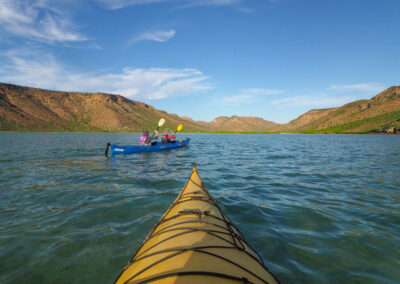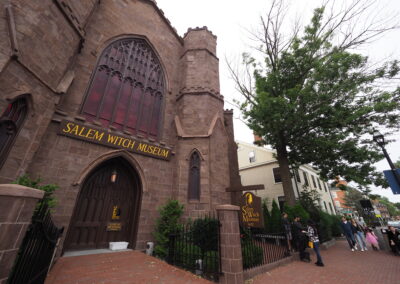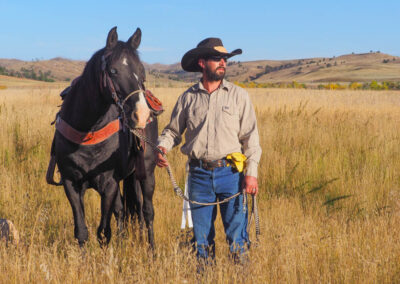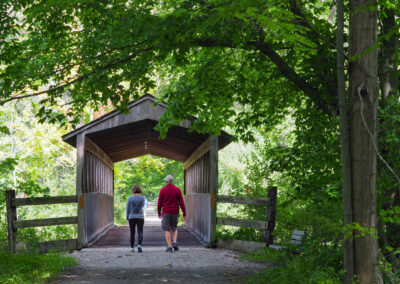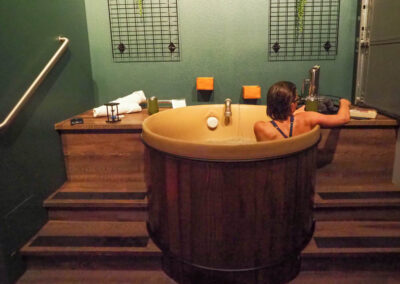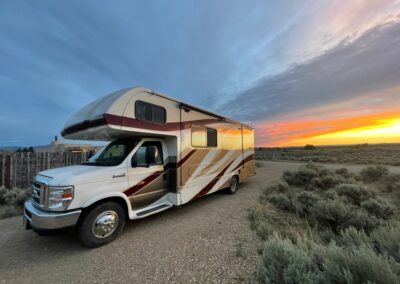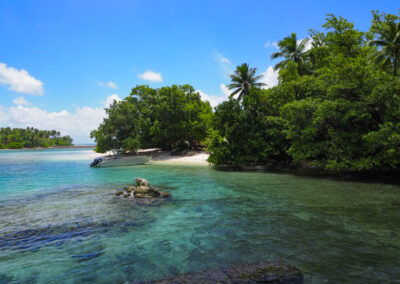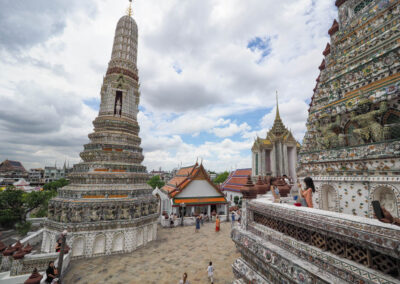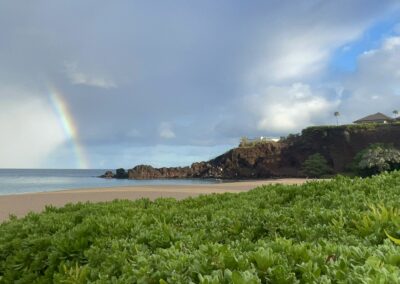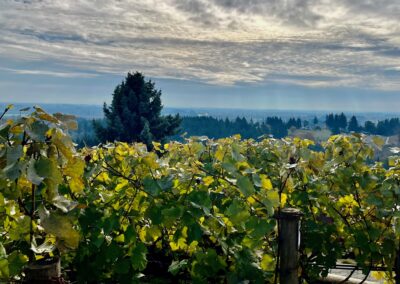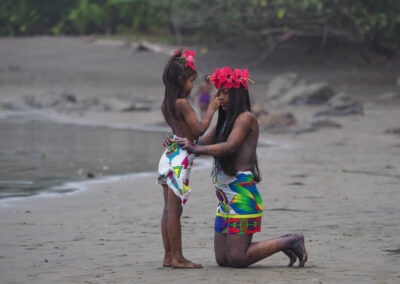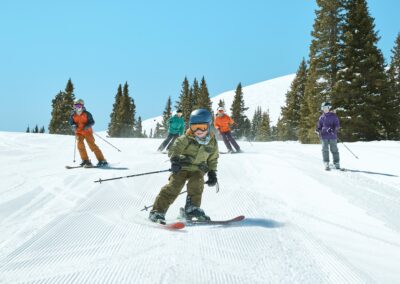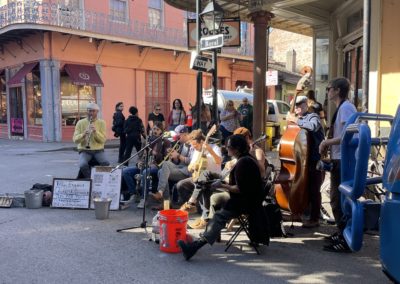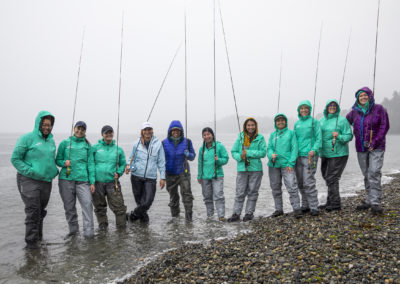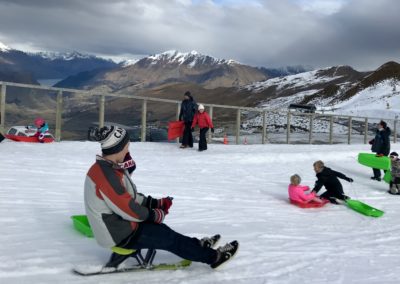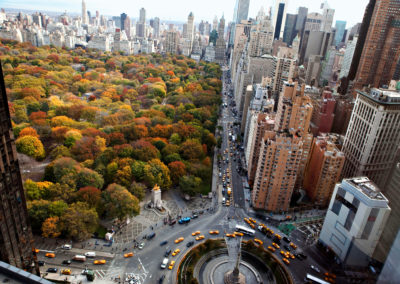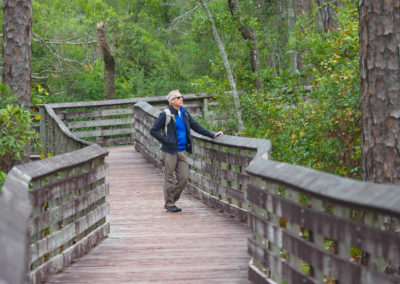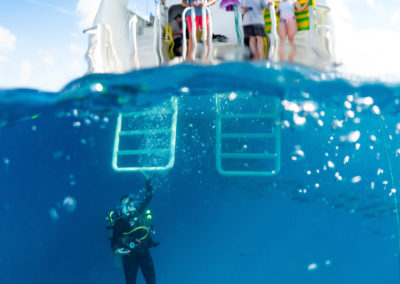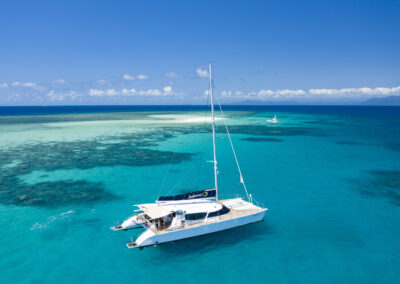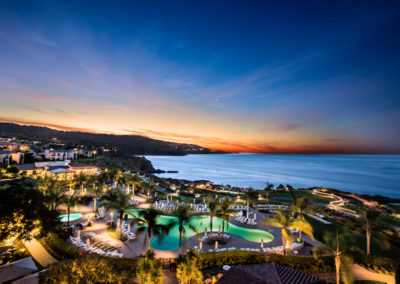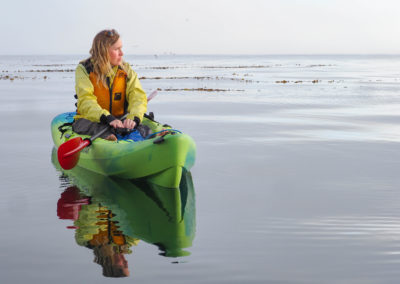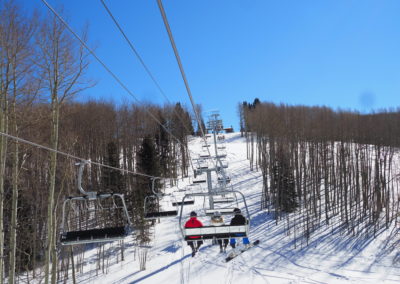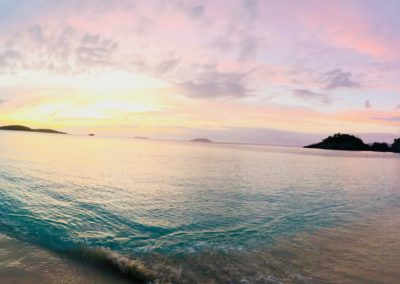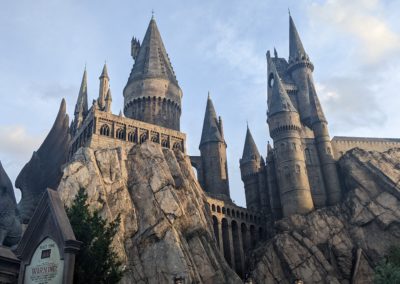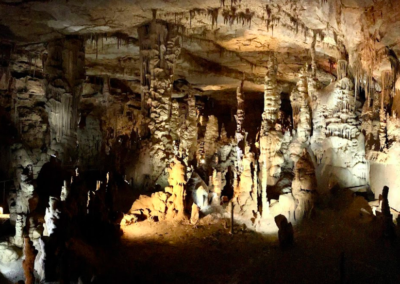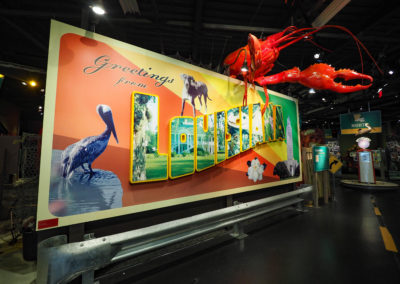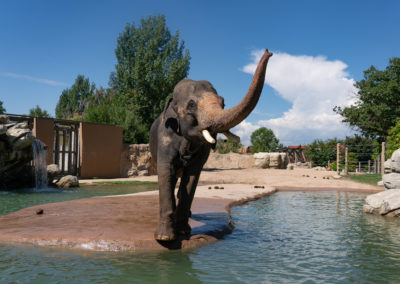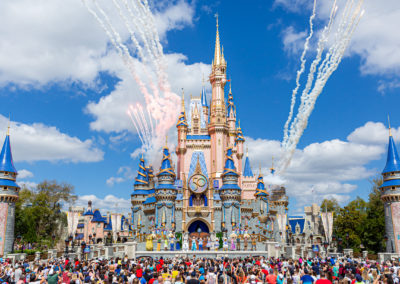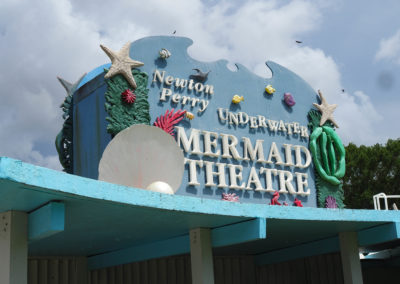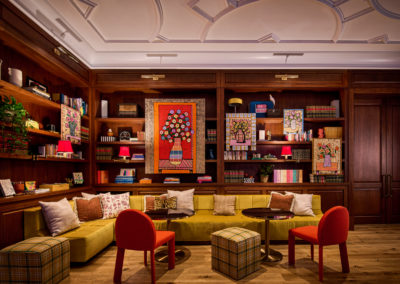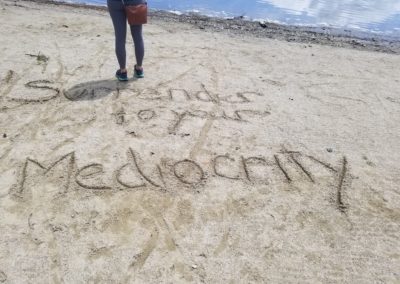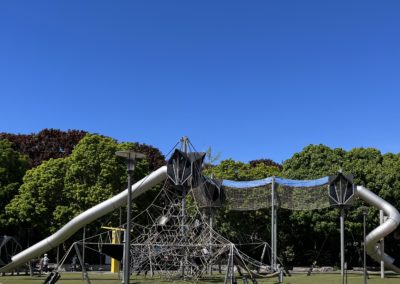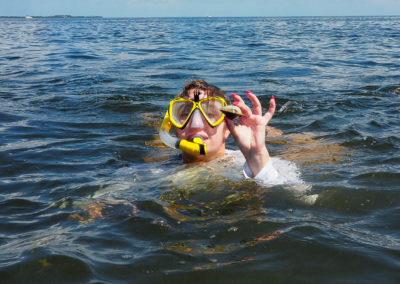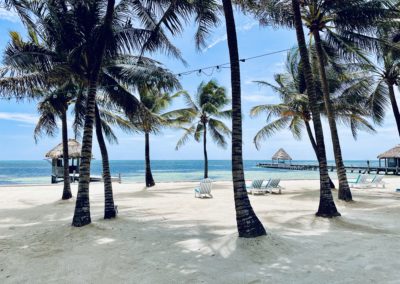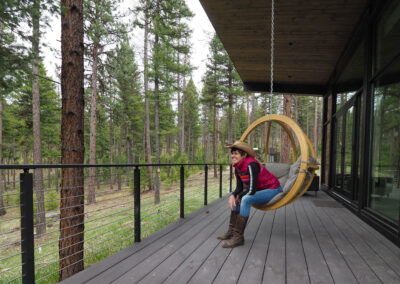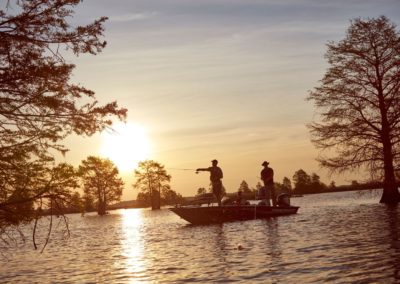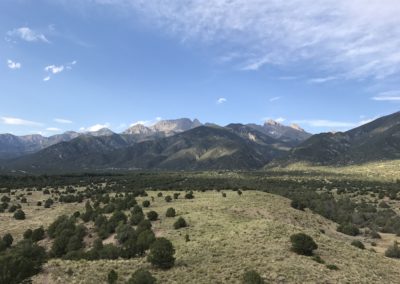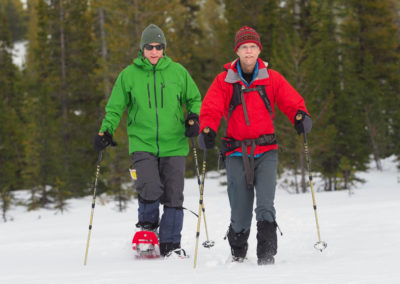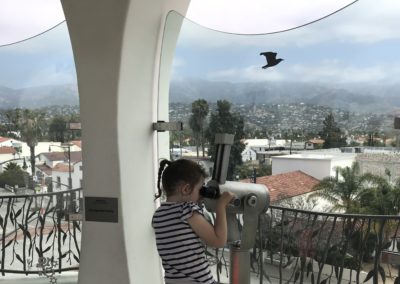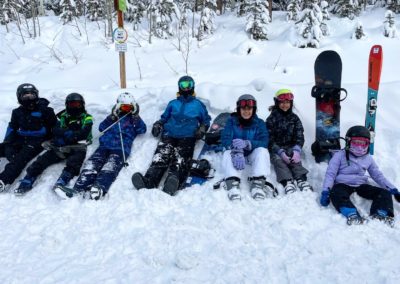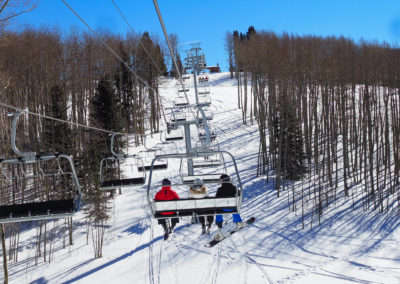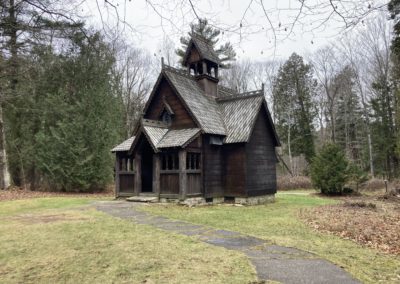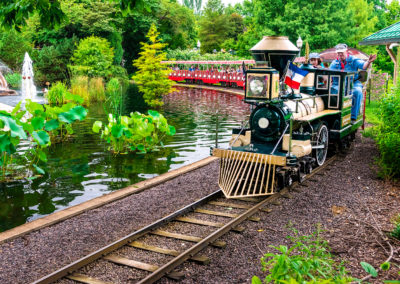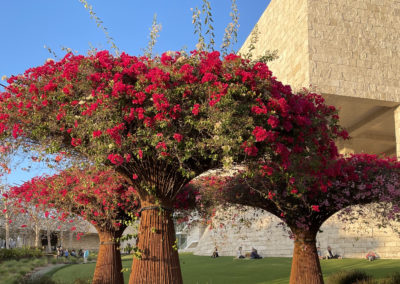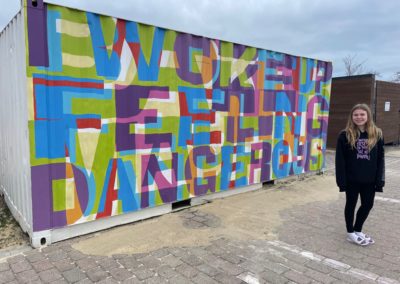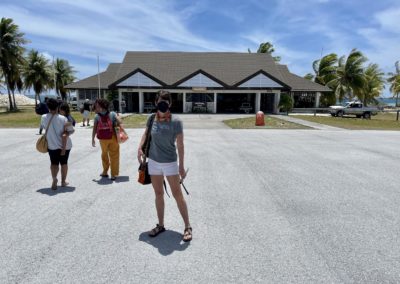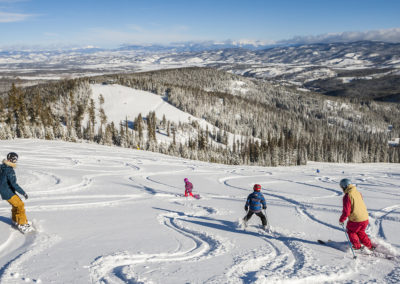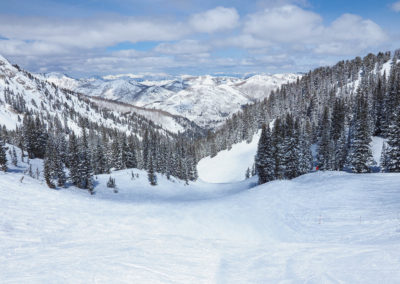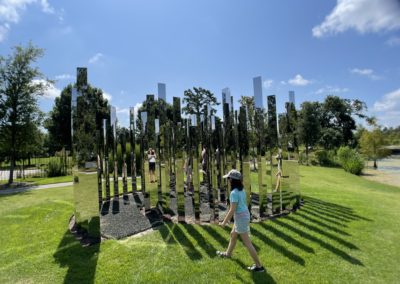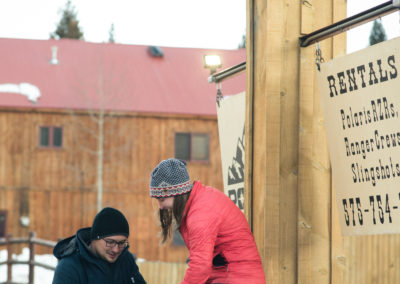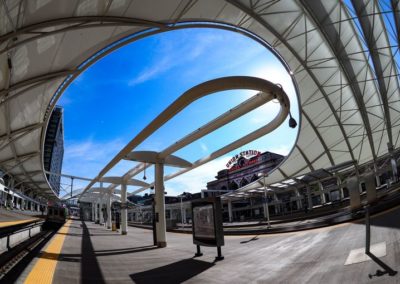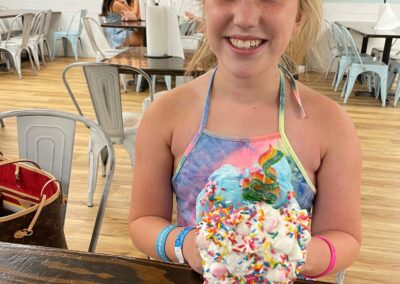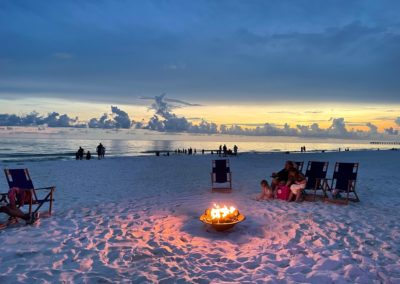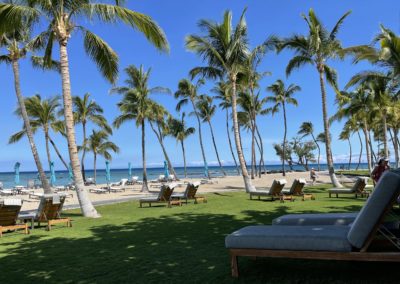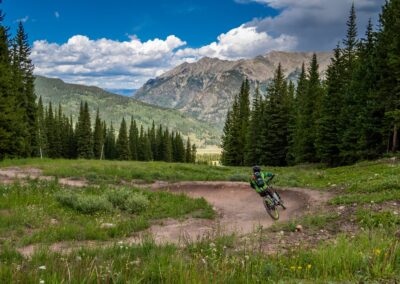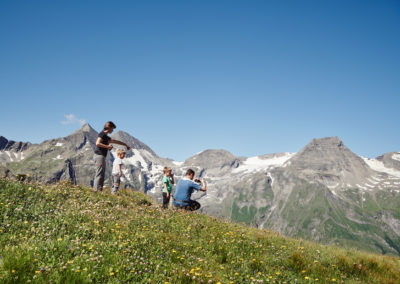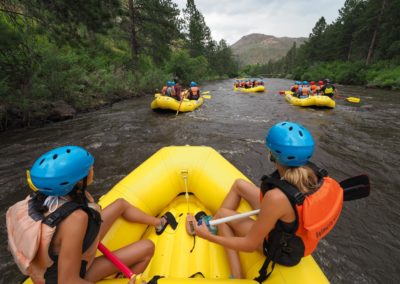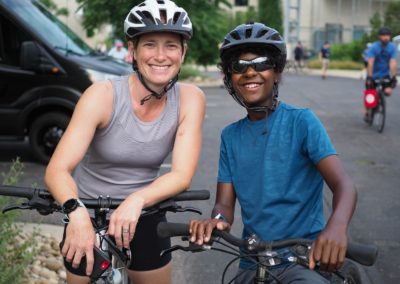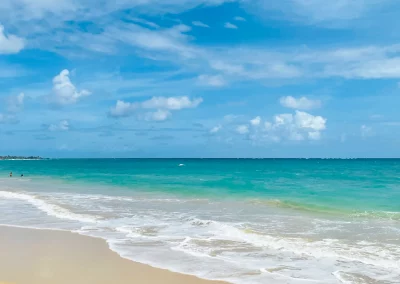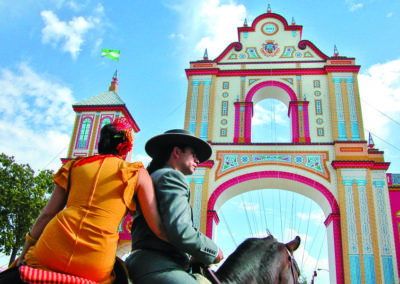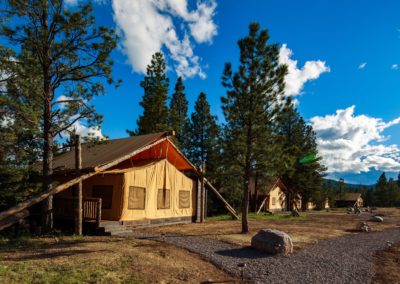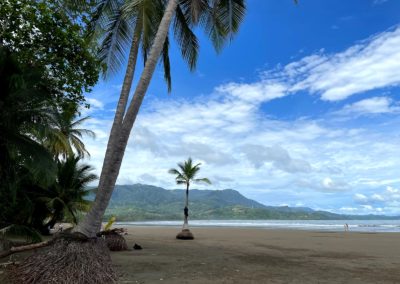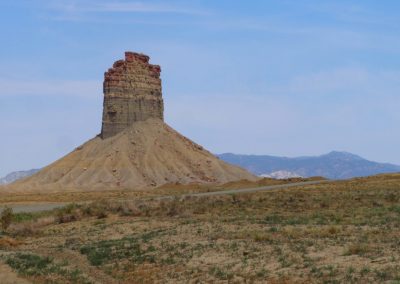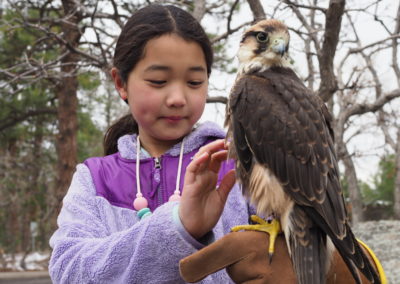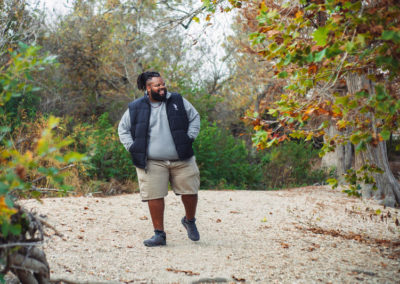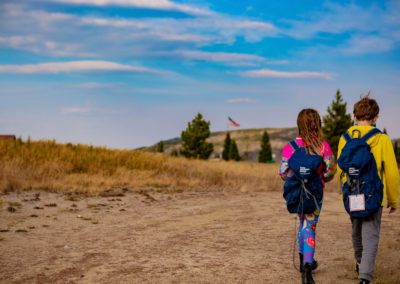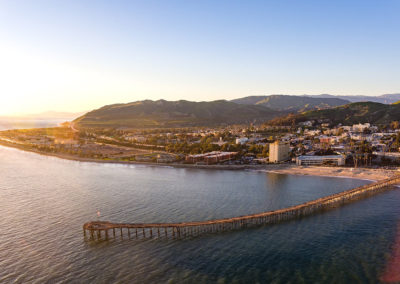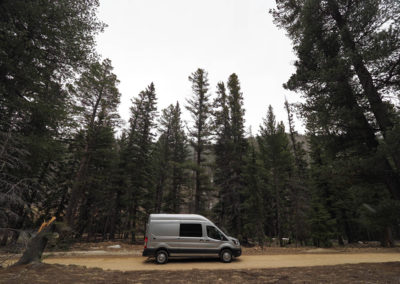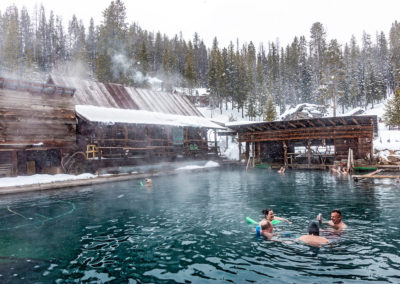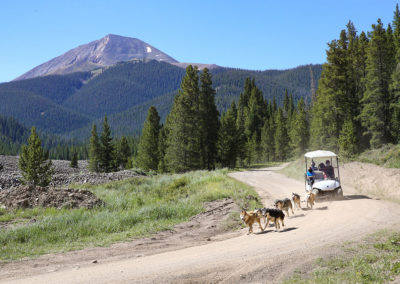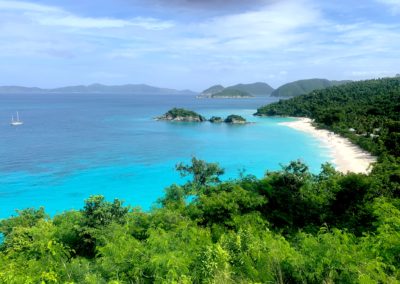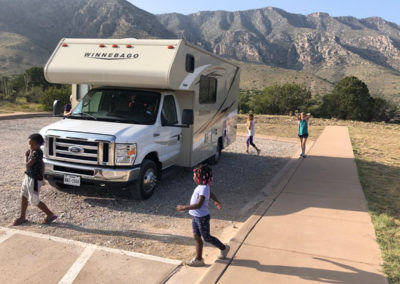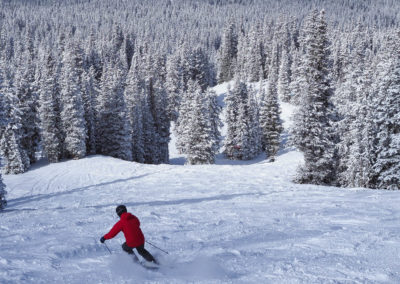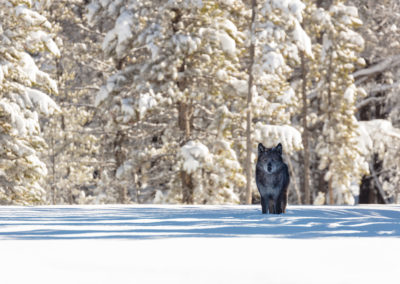
Looking down at the town of Banff from the gondola. Pam LeBlanc photo
I chalked up my fourth trip to Banff National Park in, Alberta this year, and it’s no accident that I keep going back.
The town of Banff, tucked inside Banff National Park, glitters at the foot of Mount Rundle, which looks like a giant lump of clay that’s been smacked by a huge frying pan. (You might recognize it from the opening video at the Banff Film Festival World Tour that comes to Austin each spring.) In winter you can ski, snowshoe, ride a fat tire bike, or hike to a frozen waterfall. But summers are cool, comfortable and serve up plenty of adventure too. You can hike or mountain bike, or just watch the wildlife.
I’m recovering from ACL reconstruction surgery this year, so I dialed back the activity during my latest visit. It afforded me the opportunity to learn more about the local culture, but I still managed a trek to a historic off-the-grid lodge.
Take a medicine walk in Banff National Park
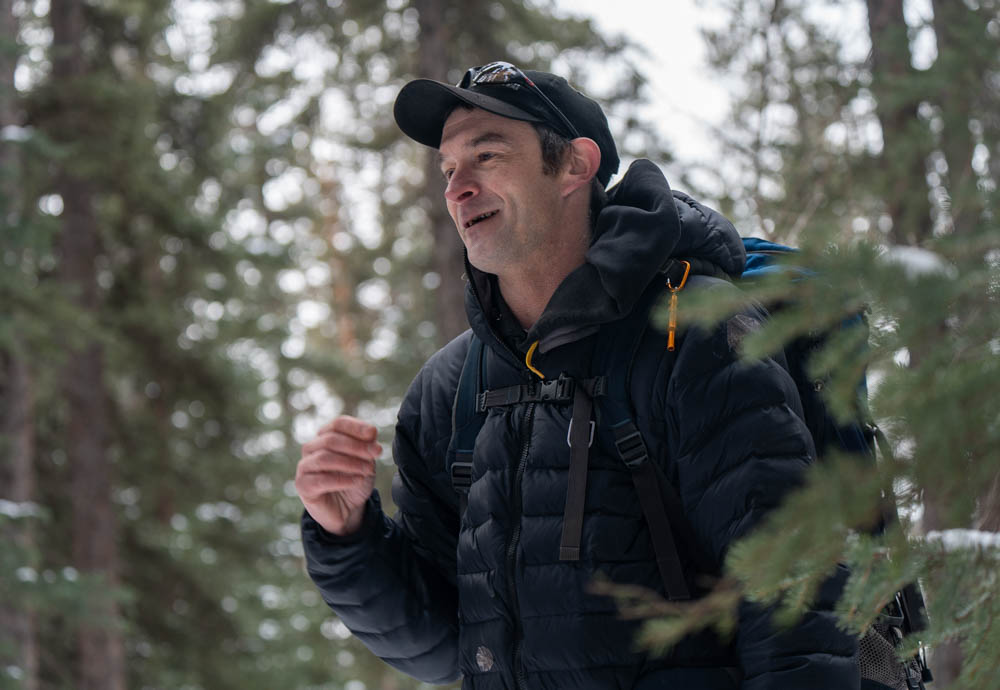
Guide Jordan Ede explains traditional uses of native plants. Pam LeBlanc photo
I wanted to learn more about the indigenous people who live in the area, so I booked a medicine walk with Mahikan Trails Indigenous Experiences. Traditional knowledge keeper Brenda Holder launched the company in 1995 to keep her native Cree traditions alive, and I met her son, Jordan Ede, at Cascade Pond, a few minutes from downtown Banff.
Before we started our two-hour walk, Ede left a small pile of tobacco on the ground as an offering to the spirits in exchange for what we took away ––– knowledge. During our hike, Ede showed me how to use powder from the bark of Aspen trees as a rudimentary sunscreen and explained that the substance also works as a pain reliever and can be used as a sort of yeast to make bread or beer. He explained how to brew dried wild rose hips to make tea and told me that indigenous people once used moisture-wicking moss to line carriers they used to transport their babies.
Then he pointed to another towering tree.
“A spruce tree is sort of like a grocery store, hardware store, and pharmacy all in one,” he told me, adding that the tree’s inner bark can be used in small quantities as food, its roots can be used like elastic to make birch bark canoes, and its sap can be mixed with ashes and rabbit droppings to make glue.
“A lot of plant medicines are now being taken more seriously in the science and medicine community.”
Tubing at Mt. Norquay
The last time I was in Banff, I spent a day skiing at Mt. Norquay, a vintage ski resort perched on a mountain a quick seven minutes from downtown. At less than 200 acres, it’s the tiniest of what locals call “the Big 3,” but it packs that acreage with a lot of old-school charm. Plus, on a clear day you can see into town from some of its slopes.
My knee wouldn’t let me ski this time, so I hit the tube chute instead. I’m glad I did. I picked up an inflatable innertube and hopped on a moving sidewalk, which whisked me to the top of Alberta’s longest tube lanes. With the help of an attendant, I climbed into my tube, awaited her push, and screamed like a baby as I zoomed down the hill, spinning as I went. It’s an adrenaline rush designed more for adults than kids.
In summer you can ride a scenic chairlift, rent electric bikes, or climb a via feratta, a roped-in climbing route that hugs the mountain.
Nightrise
That night, we headed to Sulphur Mountain in Banff, where we boarded a gondola as the sun set to experience an immersive light show called Nightrise, developed in partnership with the Stoney Nakoda Nation. Parts of the show feel overdone (think dramatic music and swirling lights), but I appreciated the nod to those who came before us. And the views of the twinkling lights of Banff down below were gorgeous.
At the top, we spent an hour or two wandering through four digital light and sound installations honoring the mountain, whose traditional name is Mînî Rhuwîn. We also watched a video of a Stoney Nakoda elder, Charlie Rabbit.
RELATED: Beautiful, bustling Bangkok
Snow shoeing into the backcountry of Banff National Park
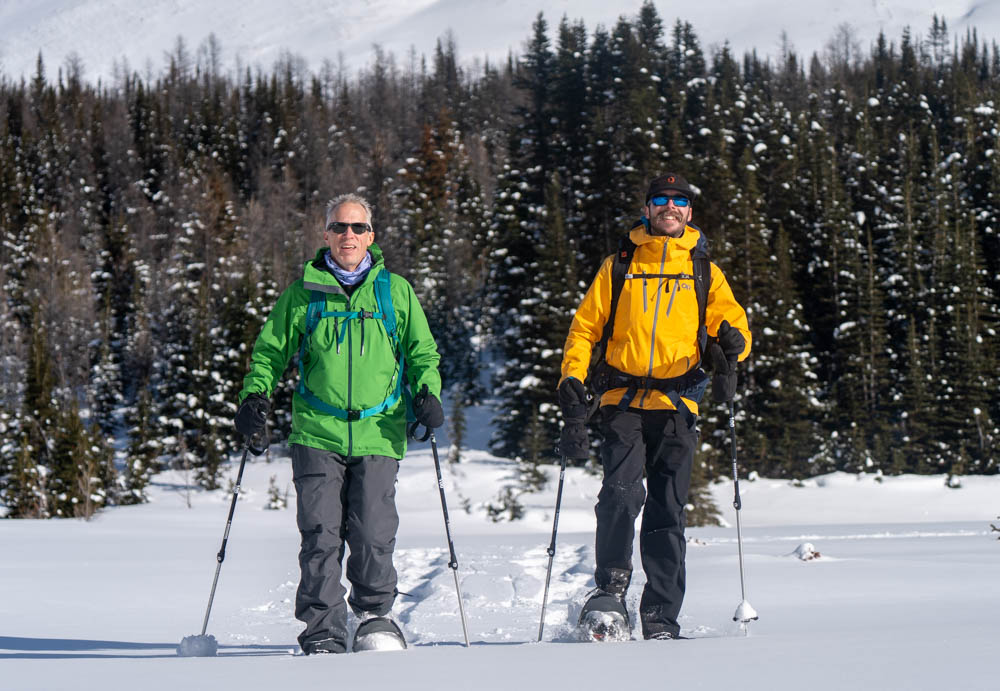
To get to Skoki Lodge inside Banff Natinoal Park, guests have to hike or snowshoe over two mountain passes. Pam LeBlanc photo
The highlight of our trip came the next day, when we set out for Skoki Lodge, a historic off-the-grid cabin that opened in 1931. No roads lead to the log structure, so visitors either ski or snowshoe there in the winter and hike in the summer. We started at Lake Louise Ski Resort; the route covers 7 miles, crosses two mountain passes and hugs a lake. Make sure you’re physically fit before signing up.
All that slogging, though, just makes the arrival all the sweeter.
The lodge has no electricity or running water, but a wood-burning stove keeps it warm and kerosene lamps provide light. The outhouse isn’t far away – just 40 or 50 yards – but it’s long enough to make a midnight pee break arduous. (Prince William and Princess Kate famously vacationed at Skoki during the summer of 2011 – but they had a fancy portable potty helicoptered in for the occasion.) A chef cooks gourmet meals, like roast rack of lamb.
We spent days exploring the outdoors, playing games, or reading in the window seat of the main room downstairs. Rooms are tiny but perfect, with jars of hot water and wash basins to make things feel luxurious. In summer months, guests can go fishing or hiking – there are several gorgeous lakes in the area.
“It’s very comfortable, but you have to put in effort to get here. You feel like you’ve earned it,” says Andrew Leighfield, the guide from Experience Lake Louise who led us in. “The gear can be challenging, and the weather can be uncomfortable, but at the end you have this reward.”
After two dreamy nights, we hiked back out. Along the way we spotted lynx and wolverine tracks. Then we drove back to Banff.
RELATED: An Alaskan adventure of a lifetime
Go for a dip in an old-timey swimsuit

Pam LeBlanc dons an old-timey swimsuit for a dip at Banff Hot Springs. Chris LeBlanc photo
Tired and sore from our trip, we headed to Banff Upper Hot Springs, where I couldn’t resist renting an old-timey swimsuit for a dip in the toasty warm waters.
Yeah, yeah, I know. Slipping into a swimsuit that someone else has worn sounds about as sanitary as borrowing a stranger’s underwear. We did it anyway – the suits are laundered after each use.
The hot springs are tucked on a hillside at the edge of Banff and the bath house is a federal heritage building. The suits are modeled after those worn in the 1930s – full body outfits in navy blue with a button flap over one shoulder. They’re unisex. Don’t think too hard, but my husband, Chris, who tried one too, said his was less than comfortable.
The pool is fed by naturally hot spring water rich in sulfate, calcium, bicarbonate, magnesium, and sodium. They are the only hot springs in Banff National Park open for swimming.
Give me some Sunshine!

A guide stops to serve hot chocolate during a snowshoeing tour at Sunshine Village in Banff National Park. Pam LeBlanc photo
We spent our last day in the area at Sunshine Village, where visitors hitch a 20-minute ride on a gondola to get from the parking area to the base of the ski area. While Chris logged another day of downhill skiing, I went snowshoeing again, this time with a guide from White Mountain Adventures, which also offers hiking trips during warmer weather. With clear skies, we got amazing views of Rock Isle and could see all the way to far-off Mount Assiniboine.
Chris and I met up that afternoon at Mad Trappers, an old log cabin at the base area of Sunshine that today serves as an apres ski bar. I got hot chocolate with a shot of Baileys and a dollop of whipped cream.
If you visit Sunshine Village this summer, check out Indigenous Days. This year’s date hasn’t been set, but last year’s event took place in September, and featured Stoney Nakoda Watâga singers and dancers.
Need more reasons to go to Banff National Park?
Exchange rates are favorable now – about 74 U.S. cents per Canadian dollar. And Banff’s elevation is about 5,000 feet, which means you’re less likely to suffer from altitude sickness than at higher mountain towns like those in Colorado.
If You Go

Getting there:
From Austin, fly into Calgary and rent a car for the 80-mile drive to Banff. Alaska Airlines and Air Canada offer flights.

Stay:
We love the Moose Hotel best, but also recommend the Mount Royal Hotel. If budget is not an issue, book a room at the luxe Fairmont Banff Springs Hotel. For a splurge, trek in to the off-the-grid Skoki Lodge.
Do:
In summer, hike, bike, watch wildlife, visit museums, ride the gondola, and take a dip in the hot springs. In winter, ski, snowshoe, ride a fat tire bike, or hike to a frozen waterfall.
Eat & Drink:
We love Park Distillery and Hello Sunshine. For fondue, try the Waldhaus Restaurant next to the Fairmont. For a quick breakfast or coffee, head to Wild Flour Bakery. And for a less expensive, no-frills dinner, make like a local and go to Ramen Arashi Banff.

Pro Tip:
On the drive from Calgary to Banff, notice the wide vegetate overpasses over the highway. There are wildlife crossings, and officials say they’ve reduced the number of animal fatalities on the roads by 90 percent.







